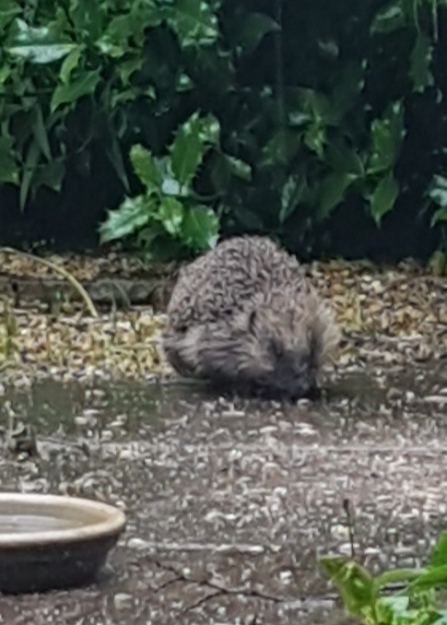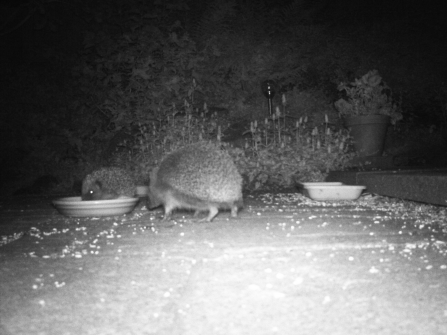It’s become routine to see hedgehogs in the garden, but just to prove the ordinary can turn into the extraordinary, an infant hoglet arrived. Hedgehogs can have a litter of four to five hoglets, but sadly the young are very vulnerable and many don’t make it. After about eight weeks hoglets will go out foraging with their mother, and after only ten days they will start to fend for themselves. Hoglets face a tough and dangerous life, living in a green space within an urban landscape, as their homes are becoming more and more fragmented.
We had been so worried about the mother, who had abandoned our hedgehog house in the last stages of pregnancy. We were alarmed to see the mother hog in the late afternoons, walking low to the ground, moving slowly and appearing rather lethargic. This went on for weeks until her visits to the garden grew shorter and more irregular. Her appearance and behaviour became so alarming that we phoned a hedgehog recuse centre for advice. Luckily, their diagnosis was that she was heavily pregnant and close to giving birth!



